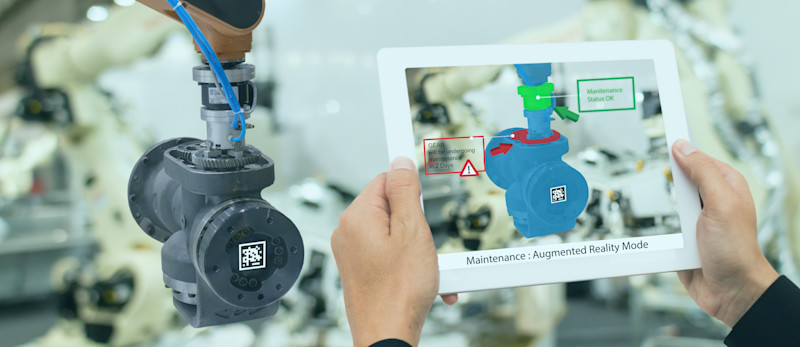Augmented reality saw a dramatic rise in popularity a few years ago. A few consumer use cases, such as Google glasses, were released ages ago and went dormant shortly after release. Consumer acceptance waned due to high costs, lack of complementing technologies, and the overall difficulty in integrating these technologies into consumer lifestyles. However, the industrial space continued to push the development of this technology and worked to overcome the consumer shortfall.
There are a couple of terms that need to be clarified before moving on.
Augmented reality (AR) superimposes a computer-generated image on a user's view of the real world, creating a composite view.
Virtual reality (VR) is an artificial three-dimensional environment based on modeling or simulations.
Finally, mixed reality (XR) is a medium consisting of immersive computer-generated environments in which elements of a physical and virtual environment are combined.
Augmented reality is thriving and continuing to find its place in the industry. Design will use this to ensure spatial acceptance. Assemblies will use this technology to augment paper instructions. Training will use AR to fulfill its need for a low-risk, hands-on experience. Despite all these use cases, limitations have prevented some manufacturers from moving forward. But where is AR now?
The design phase of product development has always leveraged cutting-edge technology to accelerate collaboration, accuracy, and speed. Lonnie Ludwig highlights the value of AR in design: "Product development is a collaborative process that is prone to risk. Augmented reality allows product developers, executives, and employees to work together to ensure that any manufacturing process problems or quality issues are detected before the product gets to the consumer. Using AR, product developers can create 3-D models of new products and introduce them into the assembly line. This virtual model lets employees check the quality of the new product before its release." As systems become more complex, the need for communication and collaboration increases. To maintain this rapid pace, data must be visualized and contextualized for the user. Sharing and visualizing the design will drive faster iterations and reduce the time to market.
The assembly process can significantly benefit from AR. This technology can overlay instructions based on use commands or triggers from onboard sensors. Have you ever tried to fit and weld an assembly with a giant D-size print or while looking back and forth on a computer monitor? In addition to instructions, operators can verify assemblies before the next step. As Augray.com notes: “Boeing reduced their aircraft manufacturing time by over 25% and lowered error rates to nearly 0% by equipping their production lines with AR-based technology! … Aircraft companies and automotive manufacturers now use AR-enabled goggles to ensure that seats are fitted in the right place. When these devices are used, an alarm is raised even if the technician deviates the positioning by a millimeter. This ensures that the technician does not waste time in refitting seats by ensuring that they are assembled the correct way at the first instance."
Training is the next area where AR can accelerate manufacturers. Training on million-dollar equipment or a device that can cause physical harm poses a tremendous amount of risk to the operator and business. AR can reduce these risks and accelerate the learning experience. Bernard Murr discusses the value of AR-based training: "Multinational engineering, industrial and aerospace conglomerate Honeywell uses VR and AR to address the problem of knowledge ‘leakage,’ where older workers retire and take their knowledge with them. Traditionally, retirees were asked to put their knowledge into PowerPoint slides or Word documents that could be shared with new hires in a classroom environment. But Honeywell found that this passive learning experience didn’t lead to great knowledge retention for new employees – after three months, information retention was around 20–30 percent.” The key for training is not only the development of knowledge and experience but also increasing confidence to achieve the correct assembly the first time.
Moving forward, adoption may still have hurdles that need to be overcome for each situation. Manufacturing is a harsh environment, and some AR equipment consists of a variety of sensors and display technologies that can be vulnerable. Not all scenarios and environments will be suitable for this technology. Additionally, the operator may require PPE, which will further encumber and discomfort the wearer. Voice and gesture controls can have reduced efficacy due to high background noise and crowded workspaces. Finally, the display itself may contain too much information, a window that appears too soon, or the wrong information.
There is never technology that fits every situation all the time. AR is another tool manufacturers can use to increase collaboration, accelerate assemblies, improve quality, and reduce the time for training. The core of AR is the digital dataset. Once this information has been quantified, the applications will require continuous improvement as manufacturers' knowledge of how to gain value from each implementation increases. This collaboration will require input from a cross-functional team that touches the entire lifecycle. Implementation and integration will require small, iterative projects before scaling up.





